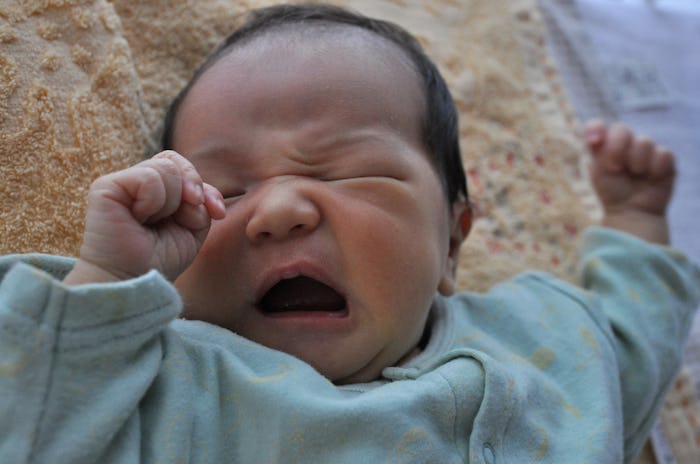Life

9 Things Sleep Coaches Want You To Know About Crying It Out
The sound of your baby crying can make your heart ache. You want to rush to them and make everything better, drying those tears. But until your baby is old enough to talk, they are going to use crying to communicate her feelings, thoughts, and needs to you. Although no time is ever a good time for your baby to be crying, many parents struggle with deciding how much (if any) they should let their child cry at bedtime. To clear things up, three experts weighed in on which things sleep coaches want you to know about crying it out, to help to understand the big picture.
I spoke with sleep coaches Brooke Nalle, Kim West, and Pam Edwards, who have dedicated their career to helping parents find solutions when they just can't get their little one to sleep; and they had some good points to make about crying it out. "First of all, let's define crying it out," Nalle says. "Crying it out means putting a baby down awake and letting her self regulate so that she can go to sleep." This can mean as little or as much crying as you decide as the parent. It's not a one size fits all plan.
To understand more about what crying it out means, take a look at the points about crying it out that sleep coaches want parents to know.
1It's Not What You Think
If there's one thing Kim West, aka The Sleep Lady, wants to set straight, it's the mental image crying it out creates. "In my experience, while there is generally some amount of crying involved in sleep coaching, there are ways to keep it at a minimum," West says. "With several methods available, parents can choose what will work best for their family’s needs and their crying tolerance level."
2Research Is Inconsistent
One of the biggest points of debate about crying it out is the connection to emotional damage and attachment issues. As Brooke Nalle, founder of Sleepy On Hudson pointed out, some research claims issues can occur, while other research shows that there is no connection between the two.
3Stress Is Relative
Many parents worry that crying it out will lead to stressed babies, but as Pam Edwards of Wee Bee Dreaming Pediatric Sleep Consulting pointed out, many things cause babies stress — too hungry, being hurt — and the way they communicate when they're stressed is through crying. There is no way to relate high stress levels in infants to crying at bedtime.
4You Don't Have To Do It
"Some families choose never to sleep train, and that is totally fine because that is their decision and their decision alone," Nalle says. Not everyone needs to parent the same way.
5You Can Choose
Within cry it out, there are a few variations to meet your comfort level. As West explains, there are three basic methods behind sleep training or coaching: Cry It Out (Extinction), Controlled Crying (Modified or Gradual Extinction), and Fading.
6Come To Your Own Conculsion
As with any parenting choice, there is a lot of information available about crying it out. Edwards encourages parents to do their research and make their own decision based on what they believe to be true and make sense for their child.
7Make Sure You Can Follow Through
Once you've chosen a sleep training method, West says the key is to be consistent. This is the best way for your efforts to be successful.
8Be A Team
Nalle always makes sure her clients know that results are best when both parents are on board with the plan. "This is very hard, and it will not go well if one parents is second guessing every step of the way and/or falling apart,"she says.
9It's Not For Every Age
If you're curious if cry it out would work for your family, you need to make sure your baby is old enough. As Edwards reminds readers, this method is not appropriate for babies under six months old.